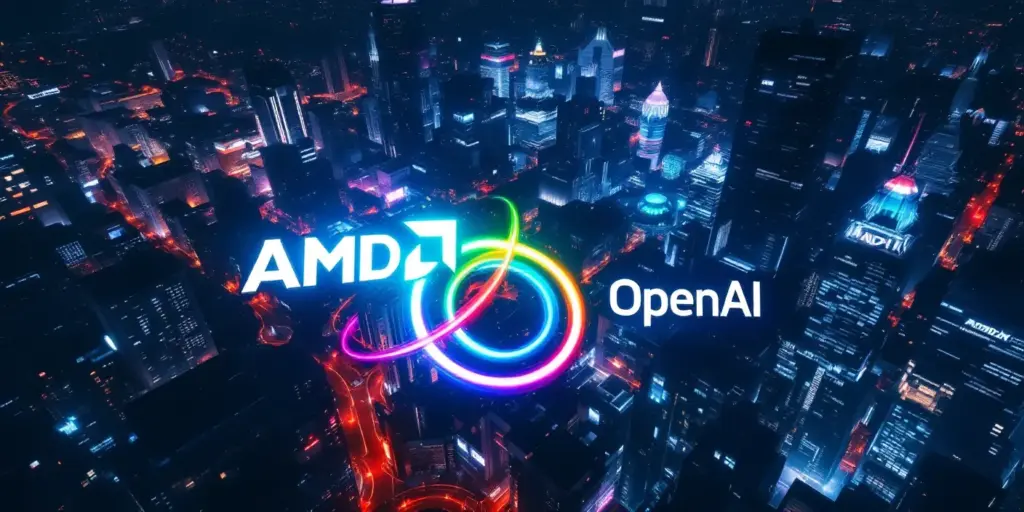AMD and OpenAI: The 6-Gigawatt Pivot That Redefines the AI Hardware Race

Roadmap Credibility: More Than Just a Promise
AMD’s trajectory is now clear: MI325X → MI350 → MI450, anchored on its CDNA architecture. The OpenAI deal doesn’t just validate a chip — it underwrites a generational pathway. Cluster architects don’t rewire interconnects or software stacks for one part; they bet on roadmaps. The fact that OpenAI committed to a multi-generation compute deal signals confidence in AMD’s forward path.
Software as the Hidden Fortification
Silicon is a token; software is the moat. AMD’s ROCm 7 stack must deliver genuine portability (train + inference) at performance parity with CUDA to make MI450 a no-tradeoff choice. The better ROCm aligns with major frameworks (PyTorch, Triton, etc.) and supports first-party LLMs, the more likely clusters adopt AMD as a default secondary rather than a “bonus fallback.”
Azure’s Role as the Catalytic Channel
Azure has already baked MI300X into its ND instances, creating operational muscle in orchestration, networking, and reliability under load. As MI350 and MI450 roll out, Microsoft gives AMD a migration path for existing deployments. That kind of channel momentum compounds beyond just the OpenAI anchor.
The Mirror Rival: Nvidia’s Blackwell
Nvidia’s Blackwell generation defines the benchmark in performance/Watt, interconnect scale, and software maturity. AMD doesn’t need to beat every metric — it needs to be compelling enough in perf/$, availability, and risk hedging. The OpenAI structure signals that buyers now care about multi-vendor optionality, not single-vendor dominance.
How the Market Should Frame the Equity Case
- Book optionality baked into the order flow: The OpenAI pact inserts multi-year visibility into AMD’s top line. If AMD replicates even a portion of that adoption among other hyperscalers, the revenue growth trajectory steepens.
- Warrants are tied to performance, not freebies: The roughly 10% potential dilution is performance-gated and price-gated. In theory, value accrues before dilution bites. Investors must watch tranche vesting triggers.
- Residual risk premium stays alive: Policy shifts, custom silicon substitution (e.g. OpenAI’s internal XPU path), and packaging constraints keep AMD’s multiple more volatile than linear extrapolation suggests. Power/infrastructure risk is suddenly part of every model.
The Pivot Metric That Moves the Needle
Between now and 2026, “cluster live-uptime ratio — how fast an ordered system becomes a productive cluster under real LLMs via ROCm” is the variable that bridges theory and earnings. If AMD can show turnkey deployments with minimal friction, the adoption multiplier accelerates.
Scenario Maps (“What-if” thinking)
- What if MI450 shipping surprises on the upside (lower power, higher yield)? Then AMD accelerates recognition, scales margin expansion, and the $600 warrant rungs look less aspirational.
- What if grid or facility timing lags? A 6 GW scale plan is as much an energy/logistics crusade as a silicon feat. Delays push revenue curves rightward and impose working capital drag.
- What if OpenAI’s in-house XPU path outpaces expectations? AMD may take on more of an inference/off-peak role, but the broader cloud universe still wants GPU optionality. The rest of the AI market is still AMD’s playground.
Summing it up
Today’s deal anchors AMD not as an also-ran, but as a credible alternative compute partner to Nvidia backed by real gigawatt scale, roadmap commitment, and incentive alignment. The stock may wobble in the short run, but the medium-term story revolves around MI450 execution, ROCm adoption, and the transition from “proof project” to “default cluster component.”
